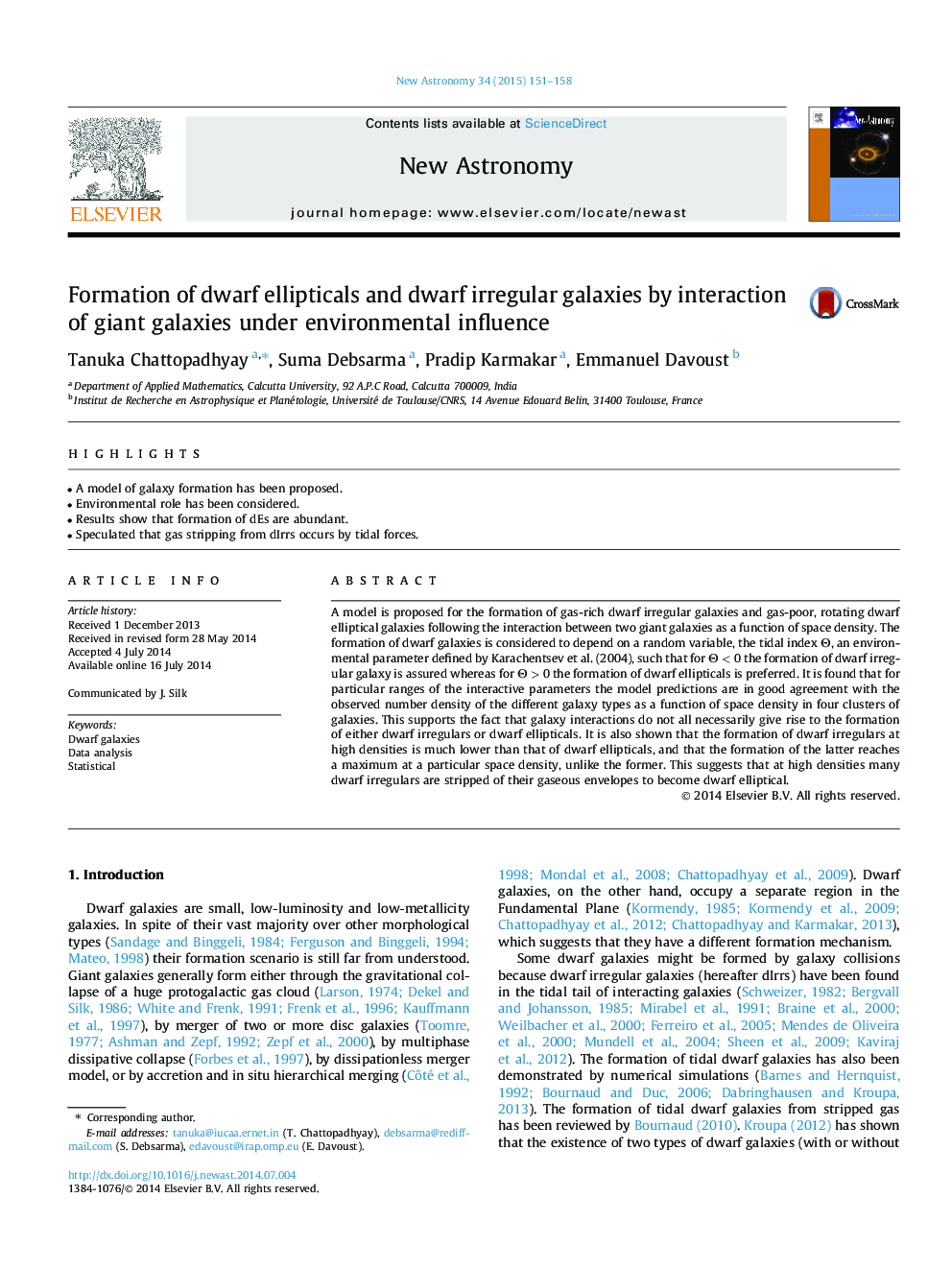| Article ID | Journal | Published Year | Pages | File Type |
|---|---|---|---|---|
| 1778970 | New Astronomy | 2015 | 8 Pages |
•A model of galaxy formation has been proposed.•Environmental role has been considered.•Results show that formation of dEs are abundant.•Speculated that gas stripping from dIrrs occurs by tidal forces.
A model is proposed for the formation of gas-rich dwarf irregular galaxies and gas-poor, rotating dwarf elliptical galaxies following the interaction between two giant galaxies as a function of space density. The formation of dwarf galaxies is considered to depend on a random variable, the tidal index ΘΘ, an environmental parameter defined by Karachentsev et al. (2004), such that for Θ<0Θ<0 the formation of dwarf irregular galaxy is assured whereas for Θ>0Θ>0 the formation of dwarf ellipticals is preferred. It is found that for particular ranges of the interactive parameters the model predictions are in good agreement with the observed number density of the different galaxy types as a function of space density in four clusters of galaxies. This supports the fact that galaxy interactions do not all necessarily give rise to the formation of either dwarf irregulars or dwarf ellipticals. It is also shown that the formation of dwarf irregulars at high densities is much lower than that of dwarf ellipticals, and that the formation of the latter reaches a maximum at a particular space density, unlike the former. This suggests that at high densities many dwarf irregulars are stripped of their gaseous envelopes to become dwarf elliptical.
